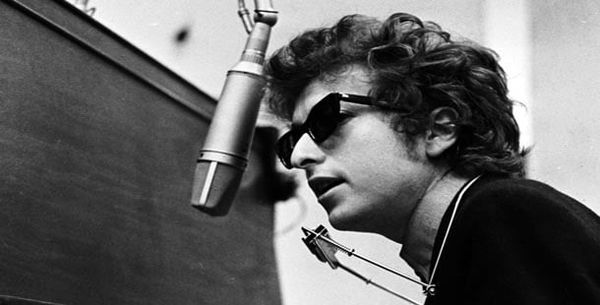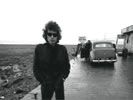Eye For Film >> Movies >> No Direction Home (2005) Film Review
No Direction Home
Reviewed by: Chris

People ask, but why did they boo when Bob Dylan started playing electric guitar? Surely it wasn't that big a deal..?
I was alive then. Believe me, it was. People got very upset about it. I think it was something to do with investing so heavily, in an emotional way, in his folk persona. He symbolised every teenager's dream of righteous rebellion. Audiences were far less fragmented in those days. People staked a lot on believing in him (or rather, believing in what they wanted his lyrics to mean). You could cut the air with a knife when you asked someone if they liked his electric stuff.

Bob Dylan reached the height of his fame after three or four albums of (largely) protest songs. He accompanied himself on nothing more than an acoustic guitar and harmonica. Some were simple stories. Some were deep reflections on man's inhumanity to man. He had no singing training and his voice was rough. But his lyrics captured the imagination of a generation. It was the time of mass protests against the Vietnam war. The Beatles. The Rolling Stones. Boys wearing their hair long was an act of defiance. Revulsion against the values of their fathers, against a world 'gone wrong'. When I took a Bob Dylan record home, my father told me, "Get that music out of this house!"
The only problem from Dylan's point of view was that he wasn't into being a figurehead for the antiwar movement or anything else. He just wanted to write his poetry. And sing. It's all he did. Many organisations were already on knife-edge over his refusal to 'lead the parade'. Dylan just kept on writing. Albums went platinum. And Dylan kept on writing.
One day he put some of the new poems to music with electric guitars and a backing band. In retrospect, they are easily seen as the same kind of stuff. More sophisticated maybe, but still protestin'. Yet his fans didn't see it like that. The wandering minstrel image was gone. He looked not like a humble folk artist but like a rock star. It all aroused incredible animosity, especially when the technical limitations of some of the sound sets meant people couldn't hear the lyrics properly.
Dylan didn't believe in pandering to his audience, although at one point here he observes that he can't get in tune if they're booing. There is a concert where they boo (Why did they buy tickets? he wonders... But with no thought of going backwards). The only break in the crowd's response is when he plays a song they recognise because it happens to be near the top of the charts.
These were kids who really listened to his lyrics. He could fill the Albert Hall and well-behaved, thoughtful teenagers would sit in rapt attention as he intoned Masters Of War or Blowin' In The Wind. They wanted his poetry. But more than that, they wanted a hero. When he 'went electric', the volume seemed to crash through the genteel folk stage like a blasphemous typhoon wind. No Direction Home is no idealised portrait of Dylan. Meandering through several hours of archive footage, interviews and concerts, Scorsese presents him not as a hero but as a man. The sound quality on some of the electric sets really is abominable. The pre-fame Dylan is accused of stealing some rare records and of telling lies if it was necessary to get on. But this seemingly rambling biopic eventually drives home a point that baffled his audiences at the time: Dylan, in all his guises, just wrote poetry. If people used it for anything else, that was up to them.
No Direction Home is not the gripping viewing you might expect from a portrait of one of the most famous recording artists of all time. But it gets to the heart of the man in a way that even Dylan's own (much later) autobiography hardly did. For those who have read the biography, those early years are beautifully sketched out in the film. Kerouac, Allen Ginsberg, even Woody Guthrie. Talking heads include Joan Baez giving her recollections, and the old man himself, looking back on his early rise to fame with an openness that few have witnessed before. It is a very different film from Pennebaker's Don't Look Back. A more complex portrait than the earlier film set out to be, No Direction Home is Bob Dylan deconstructed.
One day someone will make a fictionalised movie about Bob Dylan. And Scorsese's documentary film will be a major historical resource.
Reviewed on: 13 Apr 2008
















